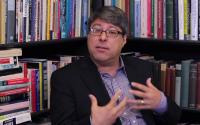 The residents of Barrow say they have noticed big changes since the 1970s |
7 August 2005Kate Bissell
Now they have discovered a rich new source of records extending their knowledge back by decades through the oral history of native Alaskans.
Barrow is the most northerly town in the United States, lying 300 miles inside the Arctic Circle.
And 92-year-old Bertha Leavitt is its oldest inhabitant.
"When I was a child", she says, "it was so much colder and the winds in winter used to be fierce." She remembers her elders telling in their stories that the weather was going to change. And since her childhood she believes this has come true.
Frozen land
In a land where not just the rivers but also the sea freezes over, it is impossible not to be aware of the seasons.
 The ice in the arctic is getting much thinner, locals say |
"Nowadays ice conditions are thinner than in the 1970s and 80s. The ice used to be 20 to 30 feet thick but now it is more like 10 feet thick. But what can we do? Sometimes I feel sad but we just have to go with what we have got.
"Up here in the Arctic we are definitely warming up, the polar pack ice has all but gone."
Percy says Western nations need to have scientific proof that the climate is warming rather than believing the word of the native people but he adds: "The white man, the climatologists are just learning what we knew was going on."
Richard Glenn is a native Alaskan and a member of the Inupiat people, as well as an ice scientist.
He is also president of the Barrow Arctic Science Consortium which is helping to combine the rich environmental knowledge of the local people with the scientific study of climate change.
There is a real camaraderie, a real sharing, he says, between the local people and the visiting experts.
One of the first to realise the value of local knowledge was Mike Spindler, a US fish and wildlife refuge manager from the Koyukuk and Nowitna National Wildlife Refuge several hundred miles away in the interior of Alaska.
He first began collecting environmental observations from elders when he found that there had been no scientific research carried out in the area before 1980, when the Wildlife Refuge was created.
He says elders have been providing a wealth of information about their environment which needed documenting.
Crazy changes
Benedict Jones is an elder who still maintains a subsistence lifestyle.
"I used to have glaciers up at my camp on the Koyukuk River, where the salmon berries used to grow. But the glaciers have all melted and the ground is drying up so there are no more salmon berries."
Further research projects to tap into elders' knowledge concerning climate change are under way at the University of Alaska's International Arctic Research Centre. And the recordings gathered are available to scientists.
 Bertha Leavitt, 92, is Barrow's oldest resident |
An area near Mike's base is referred to as a "drunken forest". He explains that the spruce trees are falling over because of thawing permafrost. This could be due to changing climate, he says, or natural succession.
But in the interviews elders have spoken of what they describe as crazy changes in the climate.
Margie Attla, an elder from the village of Galena, says "The last couple of years has been really crazy. It is kind of scary when the wind comes up at the wrong time and we have rain in the winter, the change is really there and I am not very comfortable with it."






